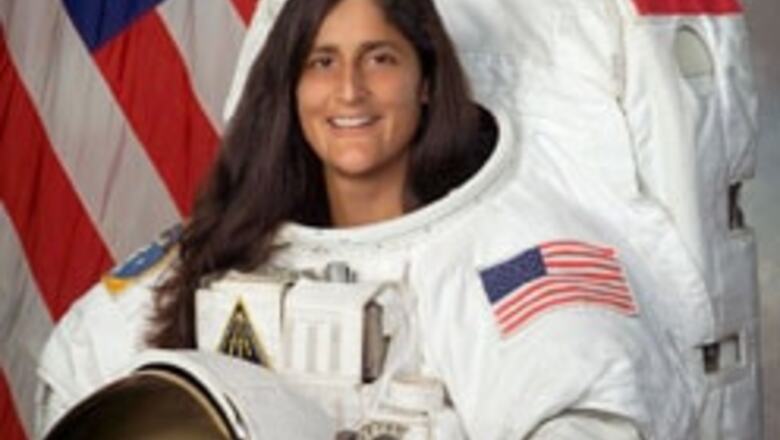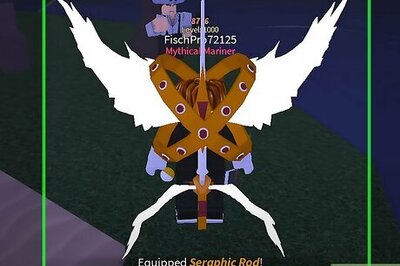
views
Washington: Indian American astronaut Sunita Williams and her six companions on Space Shuttle Discovery spent their first day in space inspecting the orbiter's heat shield and preparing for docking with the International Space Station.
Discovery is slated to link up at 0335 hrs IST on Tuesday with the station that will be Williams' new home in space for the next six months.
She will switch places with outgoing station flight engineer Thomas Reiter, with the European Space Agency.
Crew members used the robotic arm and a 50-foot boom extension sensor system to check the heat shield's health following its launch on Saturday night from Kennedy Space Centre, Florida, to begin its two-day chase of the station.
The Orbiter Boom Sensor System, which is grappled to the end of the robotic arm, is used to inspect the heat shield on the shuttle's lower surfaces. After the boom is stowed in the payload bay, the crew uses the arm's cameras to inspect the shuttle's upper surfaces.
In preparation for docking, the crew is checking out rendezvous tools and installing equipment for use when Discovery links up with the station, according to National Aeronautics and Space Administration (NASA).
The astronauts' activities include a check out of spacesuits they will use during three scheduled space walks to install a new external structural segment and rewire the station's electrical system.
It's the first space flight for Navy Commander Sunita Williams, 41, who will serve as the spacer station flight engineer. A graduate of US Naval Academy, she has a master's from the Florida Institute of Technology.
About her six year training for the Space mission, Williams says, "When something goes wrong, you just hang out for a second and take a moment to look at all the circumstances around you to really make the best-educated decision you can make. In the Navy we used to call it 'winding the clock.'"
Ground engineers will spend the next several days poring over images collected by the astronauts paying particular attention to the ship's wings and nosecap that absorb the most heat during the shuttle's re-entry into the atmosphere during landing.
In-flight inspections have been a routine part of shuttle missions since flights resumed last year after the 2003 Columbia disaster that claimed the lives of all seven crew including the first Indian American astronaut Kalpana Chawla.
Columbia was hit by a piece of falling foam debris during launch which smashed into a wing, causing damage that led to the ship's breakup during a landing attempt 16 days later. NASA's three post-Columbia shuttle launches have all been conducted during daylight hours so cameras would have a clear view of any debris falling off the fuel tank.
After two tank redesigns and two successful flights, NASA decided it was ready to lift the night-time launch ban, which severely restricts the number of opportunities to fly the shuttle to the International Space Station.
Without the flexibility to launch in darkness, NASA would not have enough time to finish assembling the half-built Space Station before the shuttle fleet is retired in 2010.
The shuttles are the only ships suitable for space station construction and at least 14 missions, including Discovery's, are needed to complete the station. The shuttle can only be launched at precise times when the station is within reach of the Kennedy Space Centre in Florida and when sun angles and other conditions are suitable for the shuttle to be in orbit.
The 12-day flight is expected to wrap up with a landing at the Kennedy Space Centre in Florida on December 21.













Comments
0 comment